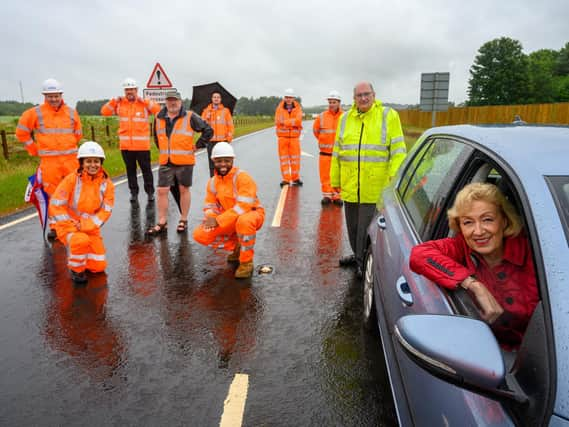New relief road opens around Banburyshire village


The new relief road around the village of Chipping Warden allows construction vehicles – and other through traffic – to avoid the centre of the village and the local primary school.
The road is a result of many years of hard work by local residents to make the case, supported by their MP, Rt Hon Dame Andrea Leadsom and local councillors.
Advertisement
Hide AdAdvertisement
Hide AdThe new road, which takes the A361 around the north west side of Chipping Warden, has been delivered in partnership with West Northamptonshire Council, and previously Northamptonshire County Council, and built by HS2 contractors ahead of the start of work on the new high speed railway which will pass to the east of the village.
The A361 – between Daventry and the M40 – used to pass through the centre of Chipping Warden, passing the Chipping Warden Primary Academy. The new road will improve road safety in the village, improve air quality and reduce noise for residents.
The construction of the 1km long relief road was agreed when the HS2 Act was passing through Parliament and built by HS2’s early works contractor Fusion – a team made up of BAM Nuttall, Ferrovial and Morgan Sindall working with Buckingham Group Contracting Ltd.
The team worked closely with the council’s highways team to design the road and bring it into use this weekend, with the local authority making a £2m contribution towards the cost. The road itself, runs from just north of Hogg End to a point north of Long Barrow but south of Stone House.
Advertisement
Hide AdAdvertisement
Hide AdLocal buses will still use the existing bus stops in the centre of the village.
Cllr Phil Larratt, portfolio holder for transport and highways on West Northamptonshire Council, said: “The completion of this relief road is wonderful news for the residents of Chipping Warden. The scheme will help in mitigating the impact of HS2 construction traffic in the village. It will also reduce the number of vehicles driving through the village centre, improving air quality, noise levels and road safety, especially for local children. We have been pleased to work with HS2 on this project.”
Rt Hon Dame Andrea Leadsom DBE, MP for South Northamptonshire said: “I am delighted that the Chipping Warden Relief Road is finally open! This has been many years in the making, and alongside the Parish Council and local residents, I have lobbied HS2 and Government hard for this vital road to be constructed. Residents are rightly pleased that the road will finally be open and I am looking forward to driving on it myself!”
HS2 Ltd’s Project Client Director Ambrose McGuire said: “The Chipping Warden relief road is a great example of what we’re doing now to reduce the impact of construction on communities as our activities ramp up over the next few years. We worked closely with the council to deliver the road, and I’d like to thank everyone involved for their work in reaching this milestone.”
Advertisement
Hide AdAdvertisement
Hide AdThe HS2 route will pass to the north-east of the village in a shallow 1.5 mile long tunnel. This ‘green tunnel’ will be created by building a concrete tunnel ‘box’ over the railway line which is then covered with earth and new trees and shrubs planted to blend it into the surrounding landscape.
Once this is complete it will reduce noise from passing trains and protects views across the countryside from the village.